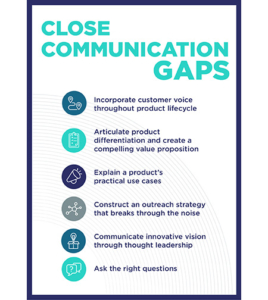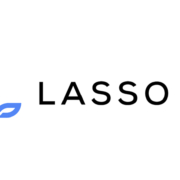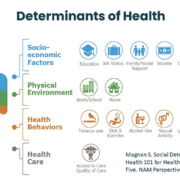The innovation gap: Why pharma is missing out on the latest advances in tech and data
The innovation gap: Why pharma is missing out on the latest advances in tech and data
By Meridith Rohrbaugh
Lifesciences companies are facing increasing pressure to make faster decisions about drug pipelines, streamline clinical trials, accelerate approvals, and increase efficiency and margins in commercialization. This means they must apply technology and data at a faster pace than ever and maintain access to the latest innovations from external partners.
This situation was compounded by the COVID-19 pandemic, which compelled the industry to re-examine the way it conducted clinical trials, engaged with patients, and promoted to HCPs. Companies began to explore decentralized clinical trials, new non-personal promotion strategies, virtual customer engagement strategies, and new ways to engage with the patient — all with an eye toward replacing status quo processes and technologies. The result was the accelerated development of new clinical and commercial technologies and data with the ultimate goal of bringing new therapies to patients faster.
But to what extent and how quickly are the most innovative technologies being adopted by the lifesciences companies that could most benefit from them?
Good news/bad news
The good news is that there is a boom of innovation taking place within the pharma tech and data vendor landscape, particularly in software solutions, advanced use of data and AI, new technologies for risk-based monitoring, and patient-centered solutions such as eCOA and eConsent.
The bad news is that many lifesciences companies either don’t know about the most current offerings or don’t understand what these offerings can do for them. That’s because, for once, the barrier to lifesciences innovation in this case is not about the notoriously conservative nature of the industry. Rather, it is an inefficient marketplace stemming from a poor exchange of information and ideas between vendors and their lifesciences customers.
Tech and data vendors are typically very strong in two areas — raising capital and developing innovative products. But if lifesciences companies — and, ultimately, patients — are to benefit from these innovations, tech and data vendors must develop a third strength — understanding how to effectively communicate product value by building a bridge that connects to their buyers and key decision makers.
There are several ways in which tech and data vendors can strengthen their customer communication and product marketing efforts and close communication gaps with customers.
Incorporating the voice of the customer throughout the product lifecycle
Customers who feel heard become loyal customers, and loyal customers often become product advocates. To understand and be able to effectively illustrate the problems that a product solves for lifesciences customers, tech and data vendors must get customer input throughout the product lifecycle. Stakeholder advisory boards can help inform early product development to ensure a good market fit. For newly built products, a lighthouse customer program gives customers early access to a product in exchange for feedback that can provide a good gauge of how future customers will respond to the product. Mature products benefit from inviting strategic customers to join a customer advisory board, which meets regularly to share in-depth product and market insight, and guidance on corporate strategies.
Articulating product differentiation and creating a compelling value proposition
Product differentiation and value proposition are closely linked, as they describe the what, the how, and the why of buying one product over another.
Differentiation is key to acquiring market share. As that word implies, a product should be positioned as “different from” and not simply “better than” a competing product. This requires a competitive analysis to understand the positioning of key competitors, which informs how to set a company apart from competitors and create a unique space for a product in the market. The focus should not only be on what a product does, but also on how a product does it differently than the competition.
Similarly, a value proposition outlines why someone would want one product over another —and it is surprising how many companies don’t have one. In-depth conversations with product, sales, and customer experience teams are essential to understanding why customers are buying from a particular company and what business challenges the company is solving for them. Use that critical customer feedback to develop a value proposition, and be sure to share it across sales, marketing, and customer success teams to ensure consistent messaging.
Explaining a product’s practical use cases
A use case is directed toward prospects and customers and describes how a company’s solution can help solve their challenges and achieve their goals. It outlines how a product’s processes work, highlights the value and increased efficiency it provides for specific users, and enables users to envision a variety of ways in which they could benefit from the product. There are many options for creating a use case, including white papers, videos, one-page sell sheets, and infographics. To create an effective use case:
- Outline the challenges and goals specific to prospects and buyers
- Connect the product’s features/benefits to buyers’ needs
- Describe the future state — what customers can expect after using the product
- Use the power of storytelling to help prospects and buyers understand the journey from their current state to the future state
 Constructing an outreach strategy that breaks through the noise
Constructing an outreach strategy that breaks through the noise
An outreach strategy can boost current sales effectiveness and future success. It consists of one or more tactics — such as multichannel campaigns, social media, digital engagement programs, and events — that are designed to do two things. First, they help the sales team attract qualified prospects for a product; second, they help get the product message across in a more personalized way. Steps include creating and prioritizing buyer personas, selecting appropriate communication channels, crafting personalized messaging, establishing follow-up strategies, and ensuring all information is integrated across the marketing automation and CRM systems.
Communicating innovative vision through thought leadership
When done well and consistently, thought leadership communications can position company leaders as knowledgeable trusted advisors — and burnish the brand. These are not marketing pieces. Instead, they use storytelling techniques to create engagement with an audience through education, shared ideas, and sometimes challenging the status quo in an industry. Thought leadership is a commitment, but it can elevate a company from a solution seller to a consultative resource.
Ask the right questions
Many tech and data vendors tend to stay internally focused long after their growth phase has passed into maturity. The key is for these companies to pivot their operations to incorporate more customer focus. Service provider marketing teams should ask the following questions:
- Can we articulate what our customers want?
- If so, how are we delivering that to them?
- Do we have a clear and concise value proposition?
- Can we articulate how our product is different from competing products — and what the benefits of those differences are?
- Do we provide understandable use cases for our products and the benefits users can derive?
- Do we tell our unique story using a variety of channels?
- Are we positioning company leaders as innovative thinkers?
As tech and data vendors learn to close these communication gaps with lifesciences customers, the friction will reduce between these companies and the most current solutions they can benefit from, allowing for a market-efficient adoption of innovation. This will provide a triple win — for tech and data vendors, lifesciences companies, and the patients they serve.
 |
Meridith Rohrbaugh is founder and CEO, Rebound Communications, a marketing and commercial acceleration firm that drives brand awareness, leads, and revenue for rapidly growing SaaS, life science data/technology, and health tech companies. Rohrbaugh is an award-winning entrepreneur, with 25 years of marketing, communication, and change experience supporting technology and lifesciences companies. |











